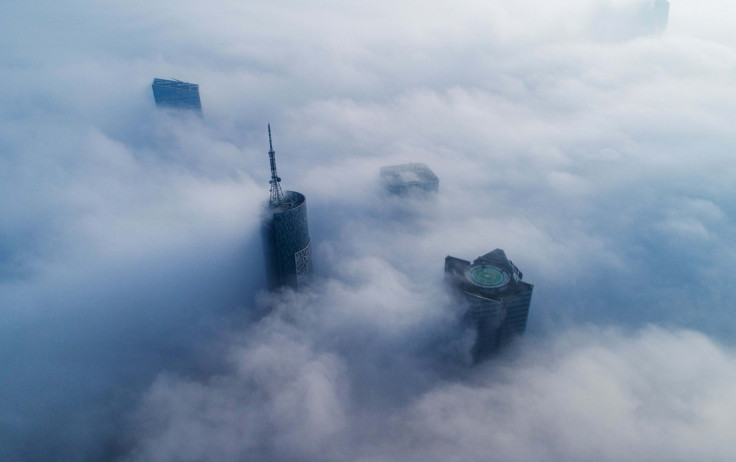Why IoT is the missing link in global weather infrastructure
Alex Kubicek, CEO and Founder, Understory, says IoT will solve the weather's worldwide observational gap problem.

There is a race underway. It has to do with weather, and no, it is not a race against time. Rather, it's about actionable data. Enterprises, governments and research organizations are striving to achieve efficiencies that were once considered impossible: detecting weather-related property damage before the owner knows about it, using hyper-local weather information to influence traffic patterns and rewriting insurance risk profiles to suit our shifting climate.
For a long time, meteorologists, insurers, government organizations and others relied on incomplete data to understand weather. Satellite infrastructure helped observe patterns, but left a huge gap in ground observations.
A storm might be damaging buildings on the ground, and only those lucky enough to have specialized tools would know it. Growers wouldn't have access to the exact amount of rain that their crops received. And for insurers, property owners and anyone else wanting to protect their assets from storm damage, that gap in ground observations is a problematic blind spot.
The answer: technology and more specifically, Internet of Things (IoT) technology. No longer pigeonholed with consumer products like thermostats, doorbells and smart voice assistants in the home, this same technology can be applied on an industrial scale to create cost-effective infrastructure that can—and will—ultimately solve the weather's worldwide observational gap problem.
Shifting Risks in Europe
Europe is a good example of a place where the IoT could lead to sea changes in weather outcomes. The lack of weather understanding in a rapidly changing climate is already hurting several industries across Europe such as tourism, agriculture, energy and transport. As climate change continues, countries risk mounting damage unless they update their weather infrastructure.
The European weather observation infrastructure consists of 30 individual national weather services, and the European National Meteorological Services Network (EUMETNET). Since there are a multitude of nations participating in EUMETNET, the results have been a largely diverse observation infrastructure.
The main culprit of the observational gap is attributed to different weather observation platforms, varying laws within each country and the overcall cost barrier to implementing comprehensive weather understanding. The EUMETNET has worked since 1999 to bring these different schools of thought together, but still has a large challenge ahead. Not only around merging different types of data structures, but in dealing with the bandwidth limitations that some countries have.
In fact, the disadvantages are already starting—in the risk-averse insurance industry.
In 2017, Europe experienced an unusual cold snap and the agriculture industry suffered $3.6 billion in losses of which only $650 million was insured. The risk profile of the continent is shifting. Reinsurers and risk analysts are scrambling to define the new risk profile, but without observations, it is incredible difficult to quantify.
As a result, more and more reinsurers are deciding to not do business in European countries and some are even pulling out of the market all together. The Extreme Weather Report from Urban Land Interests predicts that "expected monetary losses for buildings are likely to double in some places in the near future." Germany is one example of a country seeing greater risks due to increasing wind hazards expected over the next 100 years.
Europe is home to the World Meteorological Organization, an organization that sets the standards for all weather observations. Yet the costs of installing new observational measures using legacy weather technology has been prohibitive to fully understanding the increase in weather risks. With the advent of IoT technology, costs are dropping significantly, providing an opportunity for Europe to get the weather and risk understanding it deserves.
The Modernization of Weather Infrastructure
The weather technology and infrastructure of the past fifty years was created primarily for government and academic use. Hardware providers sold their products at a premium. Until now, governments have been happy to pay high prices for weather technology because they needed to protect the life and property of their citizens and legacy weather products were the best—and only—way to achieve these goals.
But ultimately, cost inefficiencies meant that observation networks could only provide so much coverage. Governments, after all, have to choose between a multitude of public services when balancing their budgets; every penny can't be spent on weather.
The IoT revolution started with the introduction of the iPhone. By putting a supercomputer equipped with a robust sensor suite in everyone's pocket, the economies of scale kicked in and dropped the cost of microprocessors. Now these microprocessors can be utilized inside innovative weather technology to cut the bloat of legacy hardware and reduce the costs of deploying new observation platforms dramatically.
From a software standpoint, on-demand cloud infrastructures, DevOps tools and powerful open-source software enable a modern weather infrastructure for a fraction of the previous cost. IBM's application of Watson technology in the weather arena is just one prime example of employing powerful computing processing to garner better weather data.
IoT to the rescue
The European Center for Medium-Range Weather Forecasts (ECMWF), the European model that provides forecasts around weather risks, is the most complex and highest performing operational weather model that employs software and analytics to account for the gaps in observations. While this model does an excellent job forecasting potential catastrophes and keeping citizens out of harm's way, it does not show how weather events actually unfold, leaving insurance companies to slowly respond to damage claims after being alerted by their policyholders and thus slowing disaster recovery efforts.
With the IoT, which is closing the gap in ground observations, this is paving the way for a clearer, more applicable field of weather. The IoT will help legacy-weighted systems like that in Europe usher in the next wave of cost-effective and comprehensive weather observing platforms to change the way we understand weather. Moreover, the IoT will empower insurance companies to aid people in recovering from disasters faster with adjusted price risks. New insights into weather will allow other sectors like real estate and agriculture to protect themselves against new changes in our environment. And in a world where weather patterns are growing more extreme, protection is the best things we can hope to perfect.
Alex Kubicek is CEO and Founder of Understory.





















